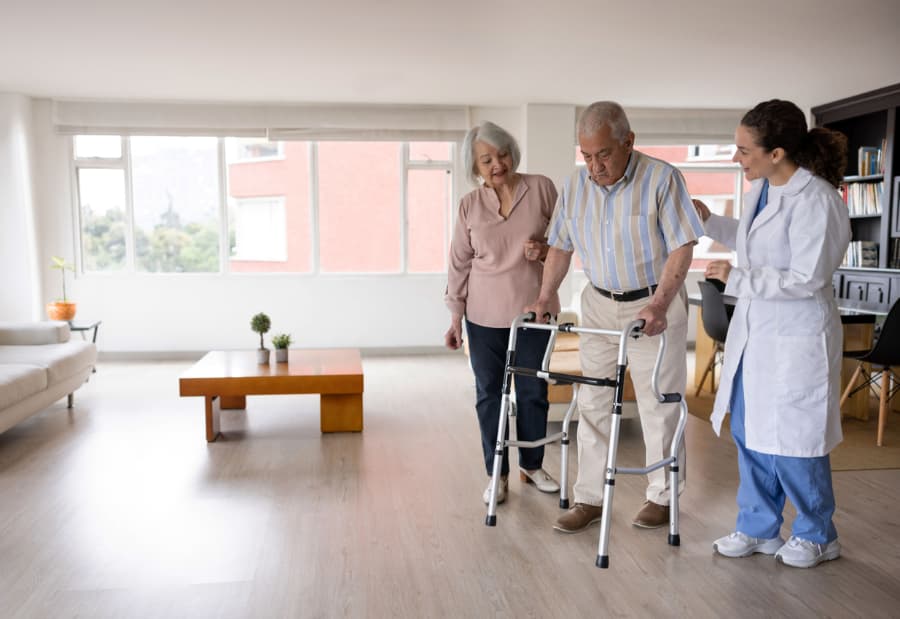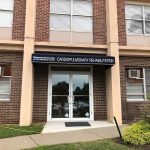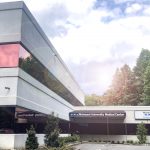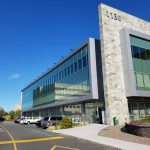A stroke is a serious medical emergency that occurs when blow flow is blocked from getting to part of the brain or when blood spills into brain tissue or areas around the brain. Strokes create long-term impacts on patients, but rehabilitation gives them the best chance to make a full recovery.
Because stroke rehabilitation involves a multifaceted treatment approach, patients and their loved ones/caregivers may wonder what is involved in the entire process. Richmond University Medical Center in Staten Island, New York, is certified as an Advanced Primary Stroke Center. Here, the team discusses what happens during the rehabilitation process, where stroke rehabilitation should take place, and who assists patients through their recovery.
A Collaborative Effort with a Complete Medical Team
Like the severity of individual stroke cases, recovery differs from patient to patient. Emotional, physical, social, and therapeutic factors are the key areas in the rehabilitation process. Treatments may involve physical therapy, playing games, engaging in activities that stimulate cognitive skills, or working with an individual or group therapist to discuss and manage difficulties during the recovery process.
Patients cannot overcome the post-stroke challenges they face alone. They need support from family, friends, and a team of health professionals to keep them on a positive path to recovery. Areas or abilities of the body impacted or weakened by a stroke are the central focus of a patient recovery plan.
Under the care of the Comprehensive Rehabilitation Center at Richmond University Medical Center, a medical team following a stroke may include:
Physicians
A primary care physician provides health guidance and lifestyle advice for a patient to focus on post-stroke. Patients may also want to work with a neurologist, an expert in nervous system issues.
Nurses
Nurses support patients as they begin navigating their post-stroke lives. They help patients manage issues that may affect their recovery, such as diabetes, high blood pressure, and any stroke complications they have. They can also offer care techniques to family members or caregivers for a patient.
Therapists
These professionals help patients relearn any skills that are impacted by their stroke. Various types of therapists can be involved in post-stroke care, including:
- Physical therapists: They help patients strengthen weakened areas in the body and build up muscle strength and balance, with a goal to help them better perform daily activities.
- Occupational therapists: A patient may work with an occupational therapist to improve the motor skills needed for daily actions, such as cooking, dressing, or writing.
- Speech therapists: These professionals understand how the brain rewires itself. They work with patients to improve their communication, speaking, thinking, memory, and writing skills. These experts often use games, puzzles, or technology tools to help improve cognitive abilities or problem-solving skills.
- Physiatrists: These experts utilize both physical and occupational therapies to help patients work through physical injuries, such as skeletal or muscle damage.
Social Workers
Some patients may have trouble implementing an effective post-stroke recovery plan, whether due to financial issues, their living situation, or a lack of access to resources/community support. A social worker helps patients make rehabilitation decisions and overcome whatever barriers they face during recovery. They may also organize support groups, providing patients and their loved ones/caregivers another outlet to work out their post-stroke frustrations.
Where Should Stroke Rehabilitation Take Place
When a patient experiencing a stroke initially arrives at a hospital, physicians assess their symptoms, give a physical exam, and perform tests to identify the type of stroke occurring. They decide how best to provide care through performing a procedure and/or administering medicine. Once a patient is stabilized, stroke rehabilitation begins while the patient is still in the hospital.
After leaving the hospital, the patient needs to have a long-term plan, detailing where stroke rehabilitation should take place after discharge. Patients, along with their loved ones/caregivers and physicians, should discuss theirarious options, such as:
- Inpatient rehabilitation facilities (IRFs): These are located within a hospital or might be a standalone structure. They provide intensive around-the-clock care. Patients who stay in an IRF are usually there for two-to-three weeks, and they participate in regimented rehabilitation activities that include occupational, physical, and speech therapy.
- Skilled nursing facilities (SNFs): These are intended for patients who no longer need hospital care but have not recovered enough to return home. Patients are also unable to handle the intensive therapy administered at IRF, making SNFs a viable alternative.
- Long-term care facilities: Professionals in these venues help patients who require assistance with everyday activities, such as bathing or dressing.
- Long-term acute care hospitals: These providers have specialized, state-of-the-art equipment, aiding patients with complex health conditions and chronic medical issues.
- Home or outpatient stroke rehabilitation: Professionals from healthcare agencies or outpatient offices, such as at the Comprehensive Rehabilitation Center, work with patients and their loved ones/caregivers. They help ensure that the transition from a hospital to continuing their recovery at home or another health facility stays at a high level without major disruption.
A theme of many stroke rehabilitation plans is repetitive actions. Patients may experience rehabilitation in a variety of methods and settings. Most stroke patients can expect their path to recovery to involve training their balance, cognitive ability, coordination, strength, motor skills, speech, and vision. Additionally, professionals may work with patients to help them adjust to their “new normal” following their stroke.
Learn About Stroke Rehabilitation From Richmond University Medical Center
Stroke rehabilitation offers patients, their loved ones, and caregivers a positive way to stay focused and motivated to recover from a life-changing medical event. With a positive attitude during the recovery process, patients have an opportunity to live fulfilling, happy post-stroke lives. Reach out to the award-winning team at Richmond University Medical Center in Staten Island, NY, to learn more about the stroke recovery process. Contact us today to learn more about stroke care or schedule an appointment with one of our post-stroke recovery experts.




